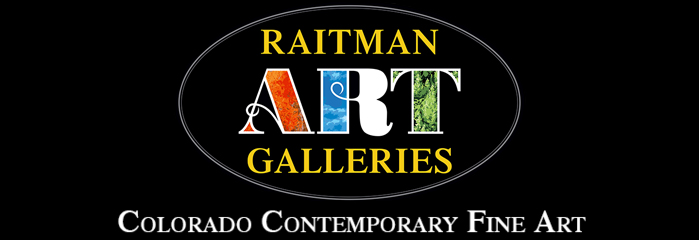How to Insure Your Fine Art January 16 2025, 0 Comments
By Kimberly Nicoletti
As fires continue to destroy so many homes in California, many people are thinking not just about what they’d pack up in a hurry, but also if they’re properly insured.
It’s essential to understand what your home insurance does and does not cover — and to what extent. Just because you have a homeowner’s policy with a personal property limit of, say, $500,000, that doesn’t mean your $30,000 painting is covered; in fact, it’s a solid bet it’s not.
“When it comes to fine art and collectibles, it’s very common for policies to have a cap,” says Summit County insurance agent Jon Crowe, of The Crowe Insurance Agency. “Even within the same carrier, it may have different levels, or packages.”
For instance, a bronze package might only cover up to $500 for fine art and collectibles, and a gold package might only cover $2,500 to $5,000.
“The key is to always understand your policy, and don’t make assumptions that art is covered by your homeowner’s policy,” he said.
To protect valuable art and other collectibles, homeowners add a scheduled policy, or floater, which may or may not come from the same insurance carrier. Scheduling allows them to insure individual items, based on an appraised value, though not all insurance companies require appraisals on art under $5,000 or $10,000.
To assist homeowners, Raitman Art Galleries provides necessary documentation to add insurance on artwork. Certificates of Authenticity are kept on file for all of the significant works of art we sell and can be updated any time to provide the current market value of a work of art purchased from our galleries. Physical and/or digital copies of the Certificates of Authenticity are always included, along with biographical information on the artist(s), upon purchasing a piece. These documents are often requested by insurance companies when insuring your collection.
“All-Risk” scheduled policies provide broader coverage than “Named Peril,” which covers only those risks named; however, All-Risk policies can exclude or limit certain things, from lack of proper maintenance and general wear and tear to mold, bugs or smog, so read the fine print. Fine art policies often cover transit and other locations, which isn’t always the case with a homeowner’s policy.
Within policies, a Scheduled Form differs from a Blanket Form; the first locks in the amount insured, even if market prices decrease. The downside is that if the value rises, the insurer only pays the scheduled amount. With a Blanket Form, valuation is based on current market value and can rise or fall.
Though it sounds a bit complicated, Crowe says that scheduling on a homeowner’s policy is straightforward.
The agent you choose — and the rate you receive — often depends on where you live. Rates for a Florida beach home usually differ from one in the Midwest, based on algorithms assessing exposure to natural disasters. Additionally, providers may offer discounts for higher levels of protection when it comes to a collector’s care for the works.
While value also obviously affects rates, so, too, does a homeowner’s claim history. Crowe recently helped a client after her prior agent poorly recommended scheduling hand-held games ranging in value from $200-$300. And, you know how kids can be: They tend to lose devices. So she made four claims, all totaling less than $1,000, and suddenly “she pretty much became uninsurable,” he said.
When dealing with homeowners insurance, he suggests: Cover your own aggravations, and use insurance for the devastations. The more claims you make, the harder it becomes to attain insurance, especially these days. For example, two claims within three to five years could render someone uninsurable, he said. On the other hand, he insures his family’s phones separately, so it doesn’t impact his ability to obtain homeowners insurance again if he makes a claim.
Some experts recommend working with fine-art-insurance specialists, particularly for large collections. Adrienne Reid, who commented on fineartestates.com as the vice president of Houston-based Huntington T. Block, one of the nation’s largest fine art insurance specialty brokerages, recommends that homeowners who own more than five works valued at $10,000 or more consider an agent or firm that specializes in fine art insurance. Specialists know insurers who use fine-art-specialized adjusters; they understand the ins and outs of claims, such as the loss of value that restoration can create. About eight insurance companies provide specific fine art underwriters throughout the nation. And, you might not guess this, but she says that, in general, premium rates decrease as the total value of a collection increases.
Overall, make sure your agent is knowledgeable and trustworthy. Then: Know what you have, understand what you need and don’t make assumptions. We are always here to help with this. Folks reach out to us frequently for opinions on artwork they have acquired, often through an estate, to gain an understanding of its significance and value. While we are not certified appraisers, we can often advise based on our knowledge of the art market at large. We are experts in regard to works that were created by the artists we represent and possess an intimate understanding of their value. Again, knowing what you have is so important. From there, you can make educated decisions about whether or how to insure your collection.
"Even though a lot of insurance companies operate similarly, they still have differences,” Crowe says, urging homeowners to fully ask about and understand the details and options “and then decide how to proceed.”
Finally, keep records, and store quality digital photographs of each artwork offsite and/or in the cloud. As with any insurance claim, the more information and documentation you have, the better.
